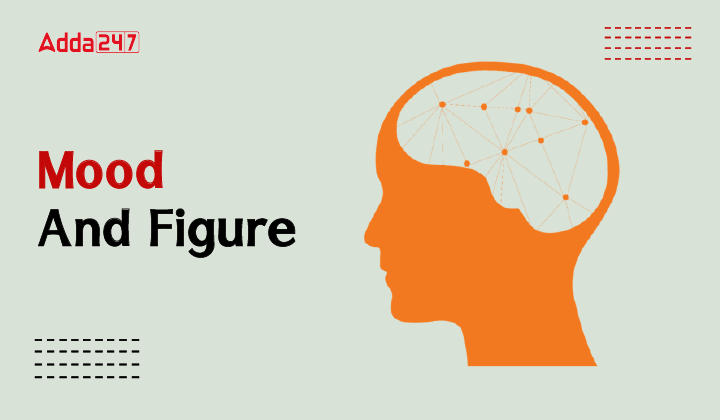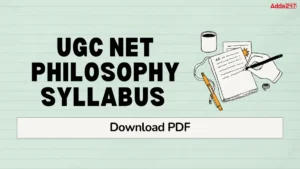Table of Contents
Logic is the foundation of rational thinking and sound argumentation. Within the realm of logic, syllogistic reasoning holds a prominent position. Syllogisms are structured arguments consisting of premises and a conclusion. Two crucial components in assessing the validity of syllogisms are mood and figure. We will delve into the concepts of mood and figure, explore their significance, and provide examples to enhance understanding.
UGC NET Study Notes for Paper 1
Mood
Mood: Decoding the Arrangement of Categorical Propositions
A. Defining Mood and Its Representation:
The mood of a syllogism refers to the arrangement of the categorical propositions (statements) used in the syllogism. Each categorical proposition in a syllogism is represented by a letter code, where each letter corresponds to a specific type of proposition.
Categorical propositions are represented by letters: A, E, I, and O.
| Proposition | Quantity | Quality | Letter |
|---|---|---|---|
| All S are P. | Universal | affirmative | A |
| No S are P. | Universal | negative | E |
| Some S are P. | particular | affirmative | I |
| Some S are not P. | particular | negative | O |
Analyzing Mood Examples:
- Example 1: “All cats are mammals. Some mammals are carnivores. Therefore, some cats are carnivores.”
Mood: AII
- Example 2: “No insects are mammals. Some animals are insects. Therefore, some animals are not mammals.”
Mood: EIO
Figure
Figure: Understanding the Placement of the Middle Term
Defining Figure and Its Four Variations:
The figure of a syllogism refers to the placement of the middle term (the term that appears in both premises but not in the conclusion) in the two premises.
Four figures: I, II, III, IV, each with distinct arrangements.
| First figure | Second figure | Third figure | Fourth figure |
| M-P | P-M | M-P | P-M |
| S-M | S-M | M-S | M-P |
| S-P | S-P | S-P | S-P |
Exploring the Four Figures with Examples:
Figure I:
- Middle term: Subject of the major premise, the predicate of the minor premise.
- Example: “All philosophers are thinkers. Some thinkers are writers. Therefore, some philosophers are writers.”
Figure II:
- Middle term: Predicate of both premises.
- Example: “All mammals are animals. Some animals are carnivores. Therefore, some mammals are carnivores.”
Figure III:
- Middle term: Subject of both premises.
- Example: “Some humans are artists. Some artists are painters. Therefore, some humans are painters.”
Figure IV:
- Middle term: Predicate of the major premise, subject of the minor premise.
- Example: “No politicians are honest. Some honest people are activists. Therefore, some activists are not politicians.”
The Crucial Interaction: Mood-Figure Combinations
Validity Determination:
- By combining mood and figure, we can classify syllogisms and determine their validity. Each mood-figure combination has specific rules that determine whether the syllogism is valid or invalid.
- Correct distribution of terms is essential for valid syllogisms.
Examples of Valid and Invalid Syllogisms:
- Valid Syllogism: AAA in Figure I will be valid as long as the terms are distributed correctly on the premises.
- Example: “All insects are arthropods. All arthropods have exoskeletons. Therefore, all insects have exoskeletons.”
| Unconditional Valid arguments | |
| First figure | AAA, EAE, AII, EIO |
| Second figure | EAE, AEE, EIO, AOO |
| Third figure | IAI, AII, OAO, EIO |
| Fourth figure | AEE, IAI, EIO |
- Invalid Syllogism: AAA in Figure III
- Example: “All mammals are animals. All animals are living beings. Therefore, all mammals are living beings.”
The Significance of Mood and Figure in Syllogistic Reasoning
Ensuring Coherence:
- Mood and figure provide a systematic approach to organizing syllogisms.
- They help establish the logical coherence of the arguments presented.
Facilitating Critical Thinking:
- Analyzing moods and figure enhances critical thinking skills.
- It allows for the identification of logical fallacies and strengthens reasoning abilities.
Conclusion:
Mood and figure are integral components of syllogistic reasoning, enabling us to evaluate the validity of arguments. Mood represents the arrangement of categorical propositions, while figure denotes the placement of the middle term. By understanding these concepts and their interplay, we can assess the logical structure of syllogisms accurately. Aspiring to be effective critical thinkers, let us embrace the study of mood and figure, ensuring sound and compelling reasoning in our everyday lives.
Download Mood and Figure Study Notes PDF
Below is the direct download link for Mood and Figure Study Notes PDF for UGC NET Exams. Candidates can access and download the Mood and Figure Study Notes PDF for UGC NET Exams from the provided link.




 UGC NET Commerce Syllabus 2025 PDF Downl...
UGC NET Commerce Syllabus 2025 PDF Downl...
 UGC NET Philosophy Syllabus 2025 PDF Dow...
UGC NET Philosophy Syllabus 2025 PDF Dow...
 PMMMNMTT for NEP 2020, Check details Her...
PMMMNMTT for NEP 2020, Check details Her...














